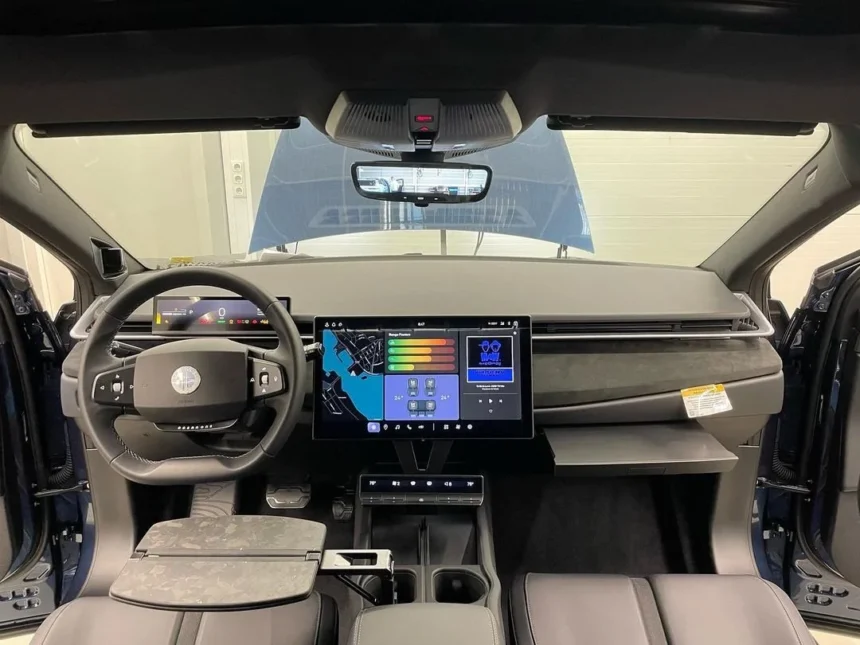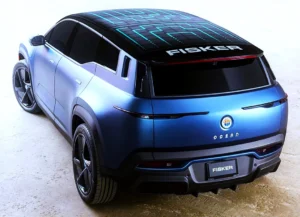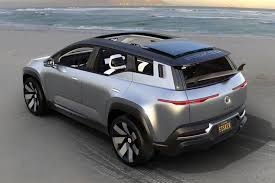The Fisker Ocean: A Fresh Wave in the Electric Vehicle Market
In a world quickly shifting toward sustainability and cleaner energy, the Fisker Ocean has emerged as a bold new contender in the electric SUV market. With a sleek design, eco-conscious materials, and impressive technology, the Fisker Ocean isn’t just another electric vehicle—it’s a statement. Developed by Fisker Inc., founded by legendary car designer Henrik Fisker, this SUV aims to blend style, sustainability, and affordability in a way few have done before.
But what makes the Fisker Ocean truly stand out in a crowded EV market filled with giants like Tesla, Ford, and Rivian? Let’s take a deep dive into its story.
A Vision Born from Experience
Henrik Fisker is no stranger to designing beautiful cars. Known for designing icons like the BMW Z8 and Aston Martin DB9, his leap into the electric vehicle industry was both ambitious and necessary. After an earlier venture, Fisker Automotive, faced financial trouble, many thought he might step away from EVs for good. But with resilience and renewed vision, he launched Fisker Inc. in 2016 with one mission in mind: to create the world’s most sustainable vehicles.
The result? The Fisker Ocean, a mid-size electric SUV designed not only for performance but for purpose.
Design That Turns Heads
From the outside, the Fisker Ocean looks nothing short of stunning. It carries a modern, muscular SUV stance, with clean lines and a futuristic silhouette. The front end features slim, high-tech LED headlights and a closed-off grille that’s both aerodynamic and elegant.
But the real magic is in the details. Fisker has used recycled materials throughout the Ocean’s build—like repurposed fishing nets for the carpets and recycled rubber for various interior components. The seats are made from vegan leather alternatives, and the use of water-based paints emphasizes the brand’s dedication to sustainability.
The Ocean even has a “California Mode”, where all the windows—including the rear glass and sunroof—can roll down at once, turning the SUV into an open-air cruiser.
Power Meets Efficiency
While it’s easy to get caught up in its looks, the Fisker Ocean also delivers under the hood. The vehicle offers multiple trims, with the highest variant, the Ocean Extreme, providing over 350 miles of range on a single charge. It can accelerate from 0 to 60 mph in just around 3.6 seconds, placing it in the same performance tier as high-end EVs.
Charging is also designed to be quick and convenient. With support for fast charging, the Ocean can go from 10% to 80% battery in about 30 minutes under optimal conditions.
Sustainability at Its Core
What really separates the Fisker Ocean from many of its competitors is its uncompromising stance on sustainability. This isn’t just an electric car—it’s an eco-conscious ecosystem on wheels. Fisker aims to create a vehicle with the lowest carbon footprint of any SUV built.
The company sources clean energy for its production process and is actively working on improving battery recycling practices. The solar roof, available on certain trims, can add up to 1,500 miles of driving range per year, just by soaking up the sun—literally driving on sunshine.
In a time when greenwashing is common, Fisker is backing up its environmental claims with measurable action.
A Tech-Focused Interior
Step inside the Fisker Ocean, and you’re greeted with a minimalist yet sophisticated cabin. The central highlight is the 17.1-inch rotating touchscreen—a first of its kind. It can switch from portrait to landscape mode, offering a more flexible digital experience.
The infotainment system supports all the modern features you’d expect: over-the-air updates, voice controls, wireless Apple CarPlay and Android Auto, and real-time navigation powered by a custom Fisker OS.
Other features include a digital rearview mirror, a panoramic glass roof, premium audio systems, and intelligent climate control—ensuring both comfort and convenience for driver and passengers.
Pricing That Challenges the Norm
One of the biggest challenges for electric vehicles has been affordability. Fisker is tackling that head-on. The entry-level version of the Fisker Ocean, the Ocean Sport, starts at just under $40,000, making it one of the most competitively priced electric SUVs on the market.
With federal tax incentives and possible state rebates, the final price could go even lower, making the Fisker Ocean accessible to a broader audience.
Facing the Giants
The electric SUV market is heating up. Tesla has the Model Y, Ford has the Mustang Mach-E, and startups like Rivian are pushing boundaries. So where does the Fisker Ocean fit in?
Unlike many rivals, Fisker is betting big on outsourcing production to keep costs down and scale up quickly. Manufacturing is handled by Magna Steyr in Austria, a company known for building high-quality vehicles for brands like Mercedes and BMW.
This lean business model allows Fisker to focus on innovation and customer experience, without the burden of building and maintaining massive factories.
What Lies Ahead for Fisker Ocean?
The road ahead is promising but not without obstacles. The EV space is competitive, and delivering on promises—especially at scale—is a major test. But early reviews of the Ocean are positive, praising its build quality, design, and value.
Fisker has also teased upcoming models, including a compact EV called the Fisker Pear and even a futuristic pickup. If the Ocean proves to be a success, it could signal a major shift in how we view car ownership, sustainability, and affordability.
Final Thoughts: More Than Just an SUV
The Fisker Ocean isn’t just a new car—it’s a new way of thinking about transportation. By combining smart design, cutting-edge tech, and a deep commitment to the environment, Fisker is challenging the norms of the auto industry.
In a time when people are more conscious of their carbon footprint and more selective about the brands they support, the Ocean offers more than just mobility. It offers meaning.
For those looking for an electric vehicle that doesn’t compromise on performance, design, or values, the Fisker Ocean might just be the perfect wave to ride into the future.







